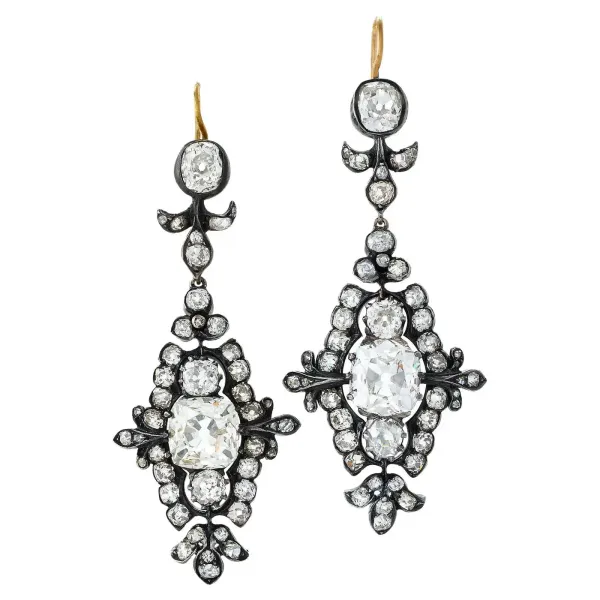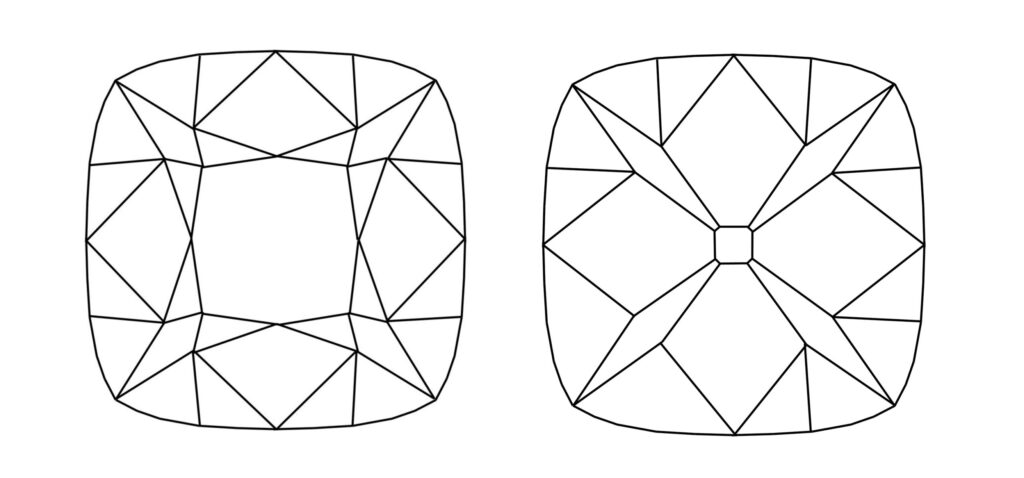Great question — both Old Mine Cuts and Old European Cuts are antique diamond styles, but they reflect different eras of cutting technology and aesthetics. Here’s a clear breakdown:
Old Mine Cut (1700s–1800s)
- Shape: Squarish to cushion-like outline, with rounded corners.
- Facets: Large, chunky facets (58 total, like modern brilliants but less symmetrical).
- Crown & Pavilion: High crown, deep pavilion.
- Culet: Very large, often visible through the table.
- Table: Small compared to modern standards.
- Brilliance: Softer glow and more “candlelight” sparkle, since they were cut for low-light settings.
- Era: Popular from the early 1700s through the mid-to-late 1800s, especially during the Georgian and Victorian periods.
- Cutting Method: Hand-cut by eye, without precise symmetry, so each stone is unique.
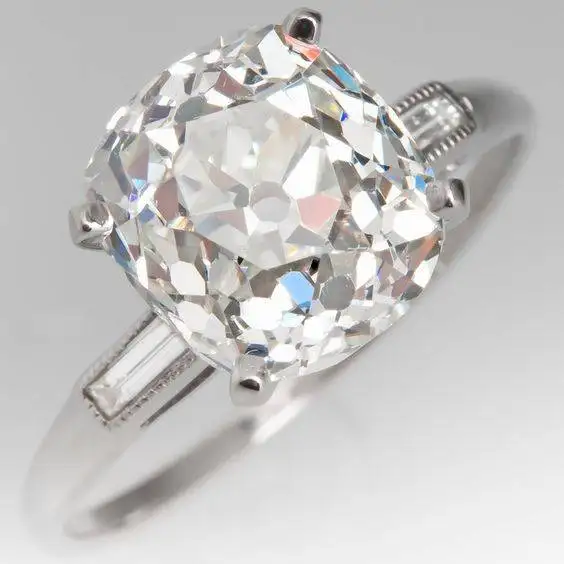
Old European Cut (Late 1800s–early 1900s)
- Shape: Rounder outline (precursor to today’s round brilliant).
- Facets: Still 58 facets, but more symmetrical and uniform than Old Mine cuts.
- Crown & Pavilion: High crown and deeper pavilion than modern brilliants, but less exaggerated than Old Mines.
- Culet: Medium to large, but smaller than most Old Mines.
- Table: Slightly larger than Old Mine cuts, but smaller than modern brilliants.
- Brilliance: Better light return, designed to maximise sparkle under electric lighting (which was becoming common).
- Era: Rose to prominence in the late 1800s and dominated the Edwardian and Art Deco eras (1900–1930s).
- Cutting Method: More advanced cutting wheels allowed for greater symmetry.
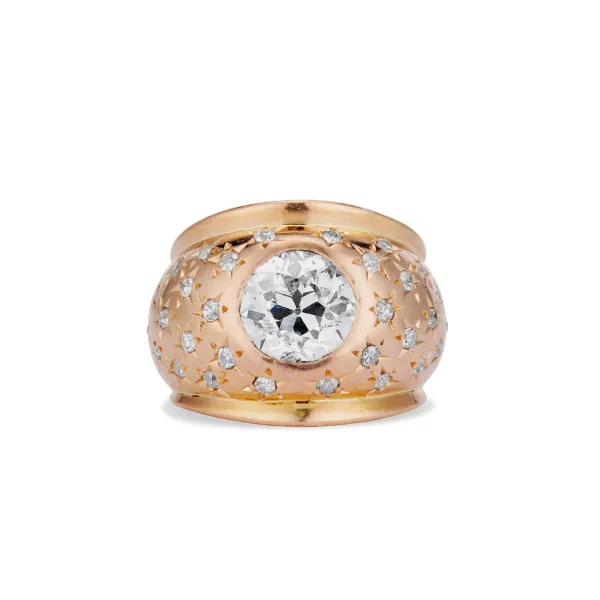
Key Difference in Look
- Old Mine Cut: Squarish cushion shape, chunky facets, romantic “glow.”
- Old European Cut: Round shape, more symmetrical, brighter sparkle (bridge between old cuts and the modern round brilliant).
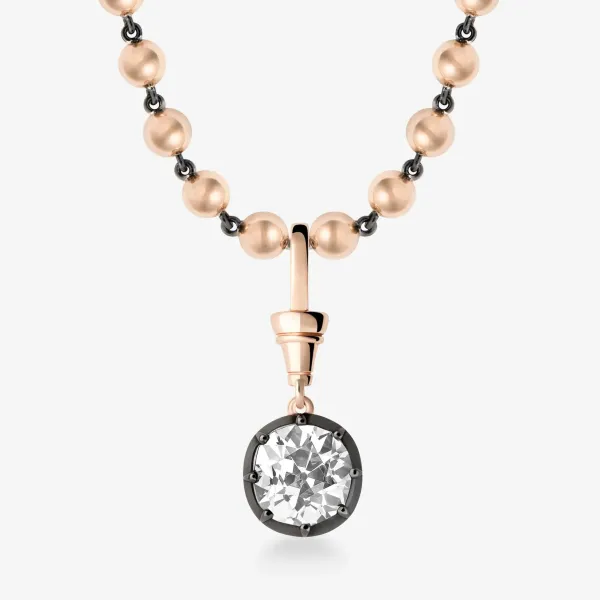
✨ In short:
- Old Mine = earlier, cushion-shaped, hand-cut for candlelight.
- Old European = later, rounder, more symmetrical, cut for electric light.
